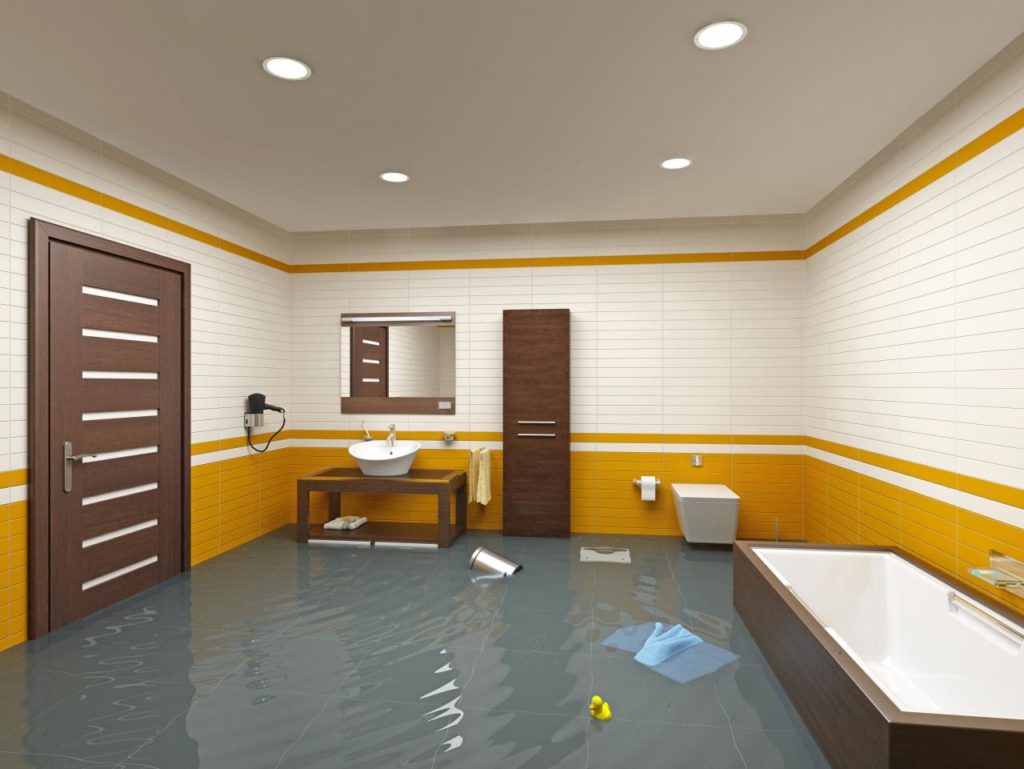6 Things to Do When Your Basement Floods
Did you know that an estimated 98 percent of all basements will flood or experience water damage in their lifetime? As the lowest point in your home, the basement is naturally more prone to flooding. Whether it’s caused by burst pipes, leaking appliances, or heavy rains, figuring out what to do when your basements floods can become quickly overwhelming.
Here, we’ve outlined the 6 steps you should take immediately after you find water in your basement.
6 Things to Do When Your Basement Floods
1 – Look for Safety Hazards
You should never enter any flooded area of your home before inspecting for electrical or gas safety hazards. Make sure that no electrical or heating components are submerged in flood water. If any are or you’re not sure if it’s safe, turn off both the power and gas to your home before entering the basement. If you can’t reach the shutoff panels, you may need to call an electrician or your gas company to help.
2 – Locate the Source of Flooding
Before you start to clean up, you need to figure out where the water in your basement is coming from. Once you find the source, you can take steps to stop the flow of water.
- When flooding is due to a burst or leaking pipe, turn off the main water supply to your home.
- When flooding is due to leaking appliances, disconnect them from power. If they continue to leak, turn off the water to them as well.
- If basement flooding is caused by heavy rains seeping into your home, wait until the storm has passed to begin cleaning. In this case, the most you can do is try to contain the water.

3 – Try to Get Sump Pumps or Floor Drains Working
Many basements have sump pumps or drainage systems in case they flood. If your home has a sump pump that’s not working, double check that it’s plugged in and no debris are clogging it. If the basement has floor drains, make sure that they are clear of any furniture or debris to try to get flooding to resolve itself.
4 – Remove Standing Water
Once you’ve been able to stop the source of your flooding, you can start the water removal and cleanup process. Before starting, move any wet items out of the basement and gather the following materials:
- Towels
- Mop
- Bucket
- Wet-dry vacuum
- Submersible sump pump (for larger flooding)
For larger amounts of water, you should start off by using a submersible sump pump or wet-dry vacuum. Once you’ve gotten up most of the standing water, you can use your towels, mop, and bucket to get up the rest.
While removing water from the basement, open any windows or doors and turn on fans for air circulation. This can help speed up the cleanup process for you.
5 – Start the Drying Process
Once you’ve gotten up most of the water in your basement, set up fans and dehumidifiers throughout all affected areas. Both fans and dehumidifiers are required for this step to ensure all moisture is removed while your basement is drying.
This equipment should be left out for at least three days to complete the drying process after flooding. Depending on the strength of the equipment you have and the amount of water that was in the basement, you may have to leave everything out for a few days longer. Completely drying out your basement is essential to prevent the development of unwanted odors or mold growth.
6 – Clean and Sanitize Walls and Floors
Be sure to mop basement floors and wipe down basement walls with a cleaning solution. This step should not be skipped, as it removes any dirt, bacteria, or mold spores caused by flooding.

Common Causes of Flooded Basements
- Frozen or leaking pipes
- Water heaters
- Appliance leaks
- Heavy rains or heavy snowmelt
- Sump pump failure
- Clogged drainage system
Do You Need A Professional for A Flooded Basement?
There are times where homeowners should have no problem dealing with basement flooding by themselves. But, when flooding becomes too much or too complex for you to handle, you’ll likely need the help of a water damage restoration service.
You should always call a flooded basement cleanup company include when:
- Floodwater is from a sewage backup.
- Water is from a contaminated source such as a nearby overflowing river.
- Water has damaged finished parts of your basement, such as carpeting or laminate flooring.
- You can tell there is moisture in walls or ceilings.
- There is visible mold growth.



